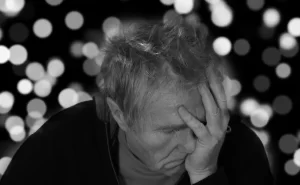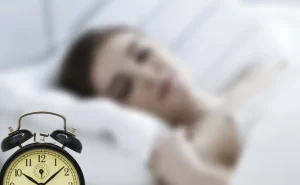Best Breathing Techniques to Treat Insomnia
Insomnia can be annoying, but there are some drug-free ways to help you fall asleep, and breathing exercises are an excellent place to begin. Here are some effective alternatives:
- Diaphragmatic Breath (Belly Breathing):
This approach triggers your body’s relaxation reaction. Lie comfortably with one hand on your chest and the other on your tummy.
Inhale slowly through your nose, feeling your stomach rise. Your chest should remain reasonably motionless. Exhale slowly through pursed lips, feeling your stomach drop. Repeat for a few minutes.
- Breathing: 4-7-8.
This relaxing technique includes breathing and imagery. Sit or lie comfortably. Exhale fully via your mouth, producing a whooshing sound. Close your lips and inhale quietly through your nose for a count of four. Hold your breath for the count of seven. Exhale entirely through your mouth for eight, producing another whooshing sound. Repeat the cycle for several minutes.
- Alternate nostril breathing:
This yogic breathing method may help you relax and focus. Sit comfortably with your back straight. Close your right nostril with your thumb and breathe slowly through your left nose. Hold your breath for a few seconds before closing your left nostril with your ring finger and softly exhaling through your right nose. Inhale through the right nostril, hold, and then exhale through the left nostril. Repeat the cycle for several minutes.
Progressive muscle relaxation entails gradually tensing and relaxing various muscle groups.
Tips:
Find what works for you. Experiment with these approaches to determine which is most soothing and helps you relax.
Like any other skill, breathing exercises improve over time with persistent practice. Even if you don’t have trouble sleeping, set aside a few minutes each day.
Breathing exercises can be a strong tool for stress reduction and relaxation. Still, they are most effective when paired with other relaxation techniques.
Combining breathing exercises with techniques such as progressive muscle relaxation or guided imagery can synergistically enhance the benefits of each particular practice.
Progressive muscle relaxation entails gradually tensing and relaxing various muscle groups. This helps to relieve bodily stress and promotes a state of deep relaxation.
Conversely, guided imagery harnesses the power of the imagination to move the mind to a tranquil, serene setting. When combined with attentive breathing, these techniques can help calm the mind, relax the body, and generate a sense of profound tranquility.
The key is to experiment and see what combination works best for you. Some folks might begin with a few minutes of deep breathing and progressive muscular relaxation practice.
Others may find that including guided imagery in their breathing exercises is more useful.
By combining these complementary relaxation techniques, you may develop a personalized toolset to help you manage stress, enhance attention, and cultivate a deeper sense of inner calm.
If your insomnia persists after these tactics, see a doctor to rule out any underlying medical concerns and look into other treatment options.













